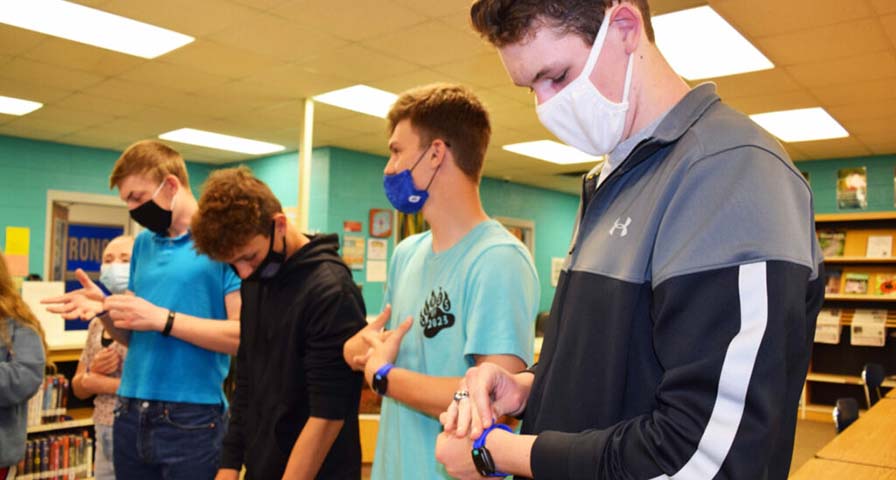Published April 28, 2021 at Skaggs Foundation.
When Galena School Nurse Julie Hagler requested a $4,000 Skaggs Legacy Endowment grant to purchase heart rate monitors in February 2020, she wanted to give students a tool to help self-regulate behavior.
Hagler was awarded the grant but the COVID-19 pandemic had already hit, causing teachers across the nation to take on double duty.
“Teachers are so overwhelmed with teaching seated and virtual students that finding the time for them to be trained on the curriculum (for the heart rate monitors) has been a challenge,” Hagler said.
In the meantime, Hagler has found another way to get familiar with the monitors and put them to use.
Galena’s track and cross country teams have been using the IHT Spirit Monitor System this spring. The heart rate monitors and software helps students track their progress, see when they can push themselves harder and even improve breathing techniques.
“I was able to take it to my doctor to figure out how I could make my breathing better,” said runner Maci Doak, a sophomore at Galena High School. “It helps me with my endurance and my speed and I can get more air in so I don’t tire so easily.”
“As a team, we’ve had some really good discussions about our heart rate and where it is at,” said track and cross country coach Shawna Sartin, who also is Galena’s director of special services.
Sartin said trialing the devices on older students has been great, but she is excited to see the monitors put into use in the regular classroom.
“Students identified by their teacher will participate in a series of introductory meetings to learn about the heart rate monitors and then be taught techniques to control emotions when they see their heart rate is elevated,” explained Hagler. “Students are very tech savvy and the monitors give an alert screen in green, yellow or red to indicate heart rate.”
The devices will help students recognize how their body feels when they are under stress. When they see they are under stress, they’ll be equipped to know techniques to self-regulate their emotions before their emotions get out of control, disrupting their learning and potentially the entire classroom.
“Students will start to be able to know what it feels like when their heart rate goes up and then know what they can do to control those emotions,” Sartin said.
At the end of each day, students will return the devices to a docking station. Data from the day is then uploaded and a report is sent to both the teacher and parents.
The report will help parents and teachers start to see patterns and recognize potential triggers.
“We want to give students the tools they need to help self-regulate behavior without having to be removed from the classroom,” Hagler said. “Keeping students in the classroom, learning and teaching them these self-regulation techniques will benefit them not just now, but throughout their lifetime.”
Hagler said they plan to begin using the heart rate monitors in the regular classroom during the upcoming summer school session.


